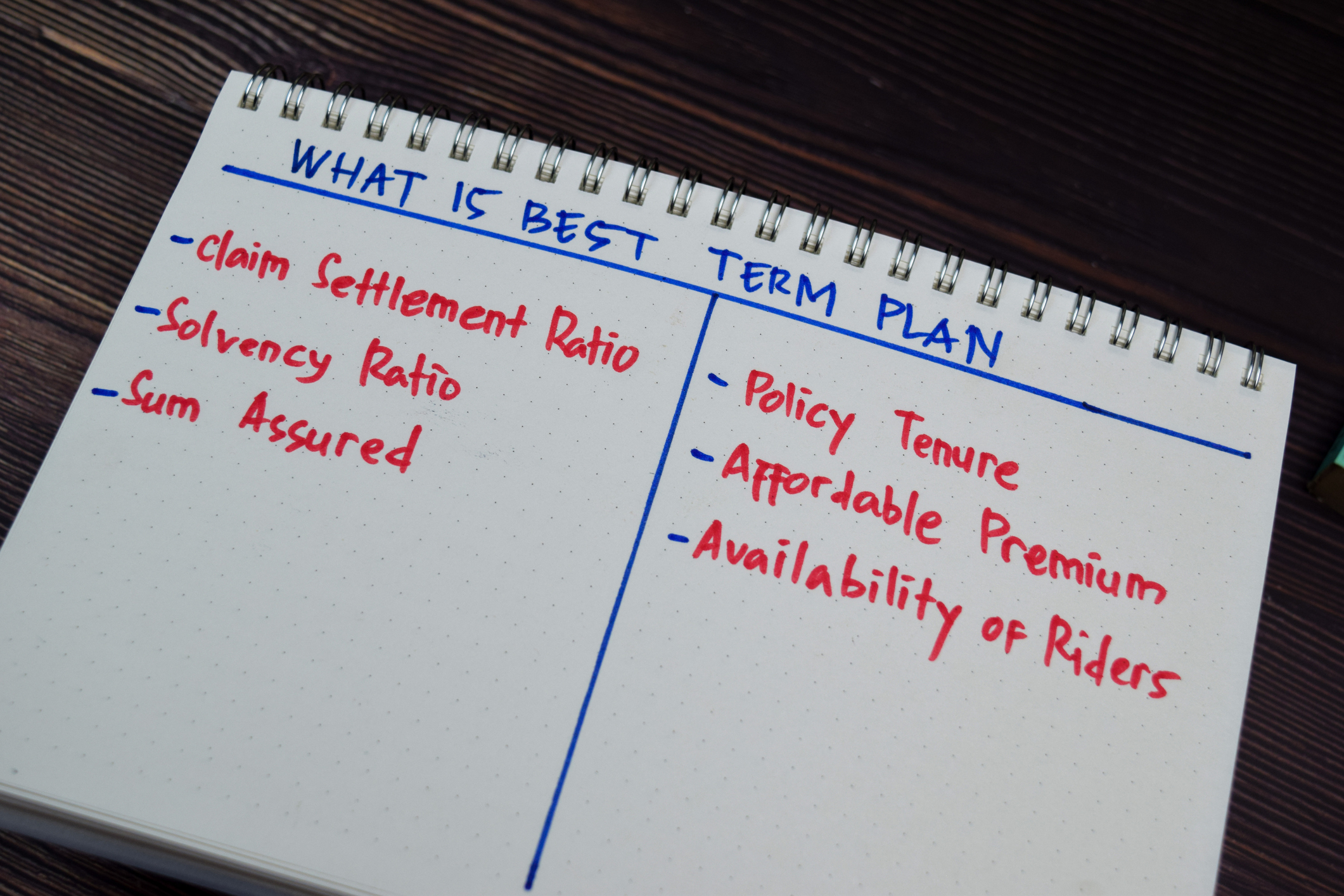Difference Between Term Insurance and Life Insurance

Insurance policies are crucial tools that help manage risk and offer financial stability during unexpected events. They protect against potential losses from accidents, health issues, or property damage. In this blog, we will delve into the various types of insurance available, such as health, life, auto, and home insurance, and explain their importance in safeguarding your assets and offering peace of mind.
Understanding these insurance policies can empower you to make informed decisions, ensuring you select the right coverage to meet your needs and secure your financial future. Whether you're protecting your health, family, home, or vehicle, gaining a comprehensive understanding of insurance fundamentals is essential for anyone looking to enhance their financial security.
What is Term Insurance?
Term insurance is a straightforward form of life insurance that provides coverage at a fixed rate of payments for a limited period, known as the term.
If the insured dies during the term, the death benefit is paid to the beneficiary. This type of insurance is ideal for those seeking affordable coverage with a clear expiration date, making it suitable for covering specific financial responsibilities like a mortgage or education costs.
What is Life Insurance?
Life insurance is a contract between an insurer and a policyholder in which the insurer guarantees payment of a death benefit to named beneficiaries when the insured dies.
Life insurance aims to provide financial protection to surviving dependents after the death of an insured. It is a crucial component of estate planning, offering peace of mind by securing the financial future of loved ones.
Key Differences Between Term and Life Insurance
Understanding the difference between term and life insurance is crucial for choosing the right coverage for your needs. Here is a table that highlights the primary differences:
| Feature | Term Insurance | Life Insurance |
| Coverage Duration | Fixed term (e.g., 10, 20, 30 years) | Lifetime or until the policy matures |
| Cost | Generally lower premiums
| Higher premiums due to lifelong coverage |
| Cash Value | No cash value; purely insurance | Builds cash value that can be borrowed against |
| Purpose | Ideal for temporary coverage needs, like child-rearing or a mortgage | Suited for long-term financial planning, including estate planning |
| Flexibility | Less flexible; cannot be converted into permanent insurance without a conversion rider | More flexible; includes options like whole, universal, and variable life |
| Premiums | Typically remains the same throughout the term | Can vary; some policies have fixed premiums; others may increase with age or market conditions
|
| Benefits upon termination | No benefits unless the insured dies within the term
| Policy might offer a return of premium or cash value accumulation |
This table outlines the fundamental characteristics and differences between term and life insurance, aiding in making an informed decision based on personal financial goals and needs.
Benefits of Term Insurance
Term insurance benefits include high coverage at low premium, financial security for your family, tax savings, and optional riders for enhanced protection.
- Affordability: Term insurance is generally less expensive than other types of life insurance, making it more accessible.
- Simplicity: Policies are straightforward without complex features or investment components, making them easy to understand.
- Flexibility: Coverage amounts and terms can be adjusted to meet changing financial responsibilities.
- Convertible Options: Some policies offer the option to convert to permanent insurance without a medical exam, providing future flexibility.
Benefits of Life Insurance
Life insurance provides long-term financial security by offering a payout to your loved ones in the event of your untimely demise. Among the keybenefits of life insurance are financial protection, savings and investment options, and tax advantages under Sections 80C and 10(10D). It’s an essential tool for building a stable and secure financial future.
- Long-Term Financial Security: Provides financial protection for your beneficiaries for your entire life, ensuring long-term security.
- Cash Value Accumulation: Certain policies (like whole life) accumulate cash value over time, which can be borrowed against or used in financial planning.
- Estate Planning: Helps in planning for estate taxes, ensuring assets are passed on to beneficiaries as intended.
- Flexible Premiums and Coverage: Some policies allow adjustment of premiums and coverage amounts as your financial situation changes.
How to Choose the Right Policy for You
Choosing the right insurance policy requires understanding your financial goals and needs. Consider the following:
- Assess Your Financial Situation: Determine your financial responsibilities and how long you need coverage.
- Understand Policy Details: Compare term and life insurance based on coverage, cost, duration, and benefits.
- Consider Future Needs: Consider financial changes and how your insurance can adapt.
- Seek Professional Advice: Consult with a financial advisor to help align your policy choice with your long-term financial planning.
Selecting the right insurance policy is a crucial decision that impacts your financial stability and peace of mind. Whether opting for term or life insurance, ensure it aligns with your financial objectives and protects your loved ones.
Frequently Asked Questions (FAQs)
Which is better, term insurance or life insurance?
Term insurance is better for short-term, affordable coverage. Life insurance suits those seeking long-term protection with added savings or investment benefits. The right choice depends on your financial goals and responsibilities.
What is the best age to buy term insurance or life insurance?
The ideal age is in your 20s or early 30s. Premiums are lower, and you're more likely to qualify easily. Starting early also ensures long-term protection at a lower overall cost.
Who is not eligible for term life insurance?
People with severe health issues, high-risk professions, or advanced age may face rejection or limited options. Eligibility also depends on lifestyle habits like smoking or drinking and past medical history.
Is a term plan affordable?
Yes, term plans are among the most affordable insurance options. They offer high coverage at low premiums, making them accessible for most individuals, especially when purchased at a younger age.
AN Apr 42/25
Popular Searches
- Term Insurance Plan
- Term Insurance Age Limit
- Term Insurance with Maturity Benefit
- Term Plan in your 30s
- Term Plan Benefits
- Zero Cost Term Insurance
- Ideal Coverage Amount for Term Insurance
- Term Insurance Riders
- What is Term Insurance
- Types of Life Insurance
- Term Insurance with Return of Premium
- Group Life Insurance
- Saral Jeevan Bima
- Life Insurance Plans
- Benefits of Life Insurance
- Life insurance vs Health Insurance
- Life Insurance vs Annuity
- Types of Life Insurance
- What is Life Insurance
- Sum Assured
- Endowment Plans
- Health Insurance Plans
- Cancer Insurance
- Child Insurance Plans
- Cash Value Life Insurance
- Savings Plan
- Guaranteed Savings Plan
- Short Term Investment Plans
- Pension Plans in India
- ULIP Plan
- ULIP Meaning
- ULIP and Riders Options
- ULIP Plan Tax Benefit
- ULIP Benefits
- What is Annuity
 :
:  :
: 



